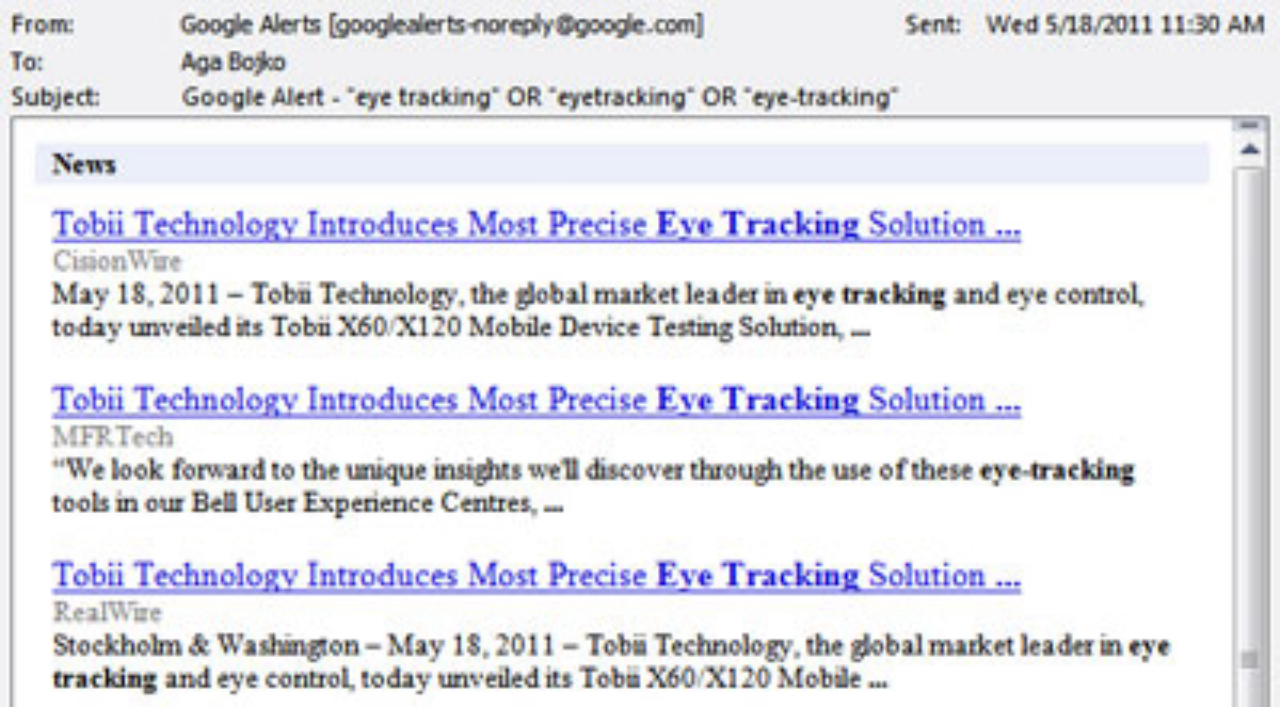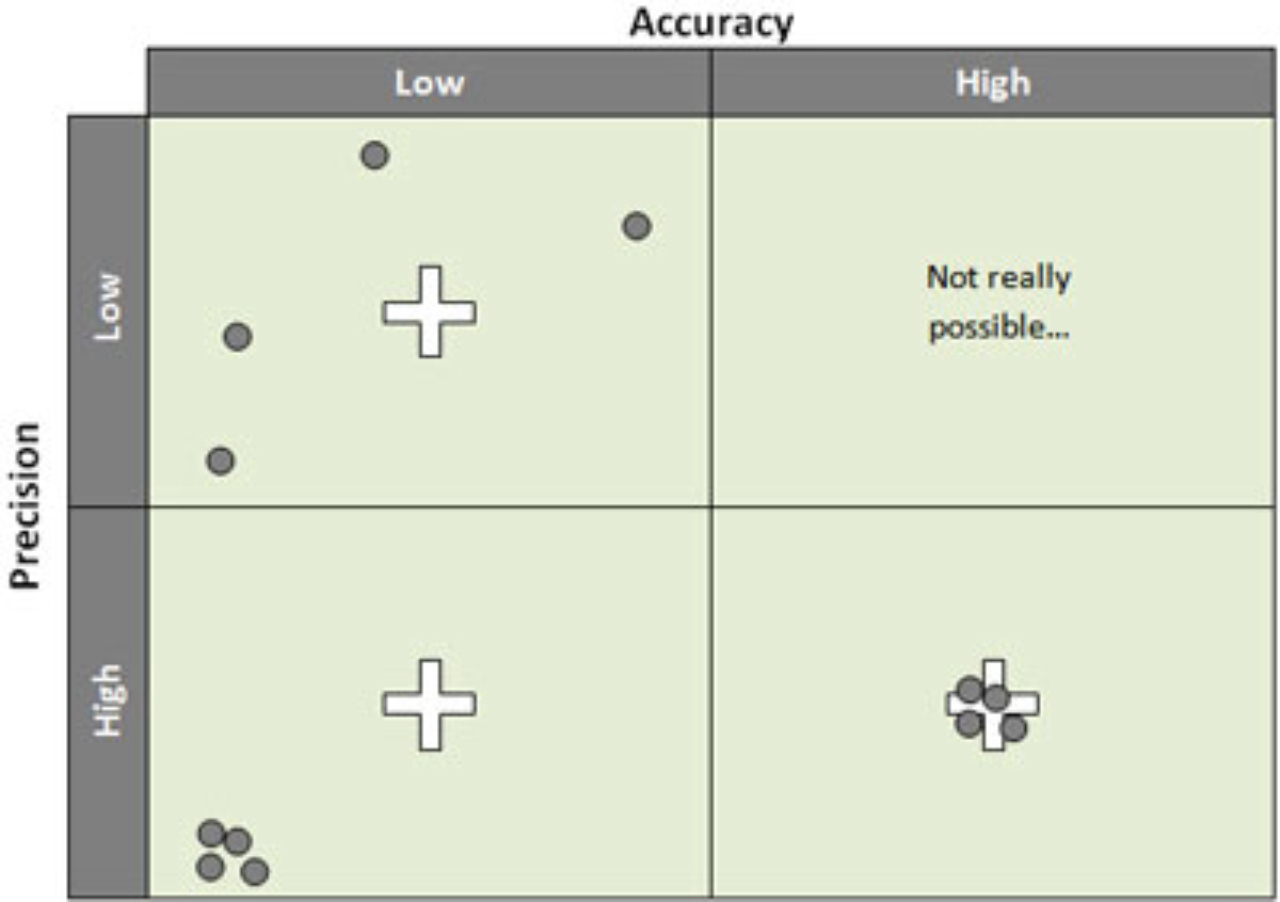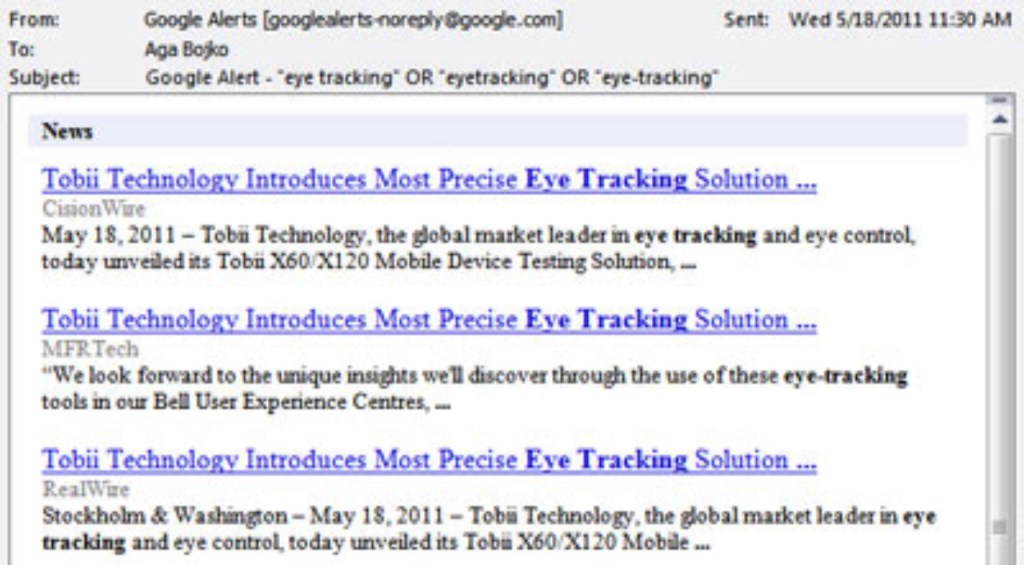(Re-post from the “Eye Tracking the User Experience” Blog. Aga is currently writing Eye Tracking the User Experience, A Practical Guide, to be published by Rosenfeld Media in 2013.)
To keep up with the developments in research and technology, I have a Google Alert set up for “eye tracking” OR “eyetracking” OR “eye-tracking.” The daily email comes to my Inbox at 11:30am, just in time for my browsing lunch (more fun than a working lunch, less fun than a non-working lunch). Today, nine out of the twenty results in the alert email mentioned Tobii Technology introducing the “most precise eye tracking solution” for mobile device testing:

Most precise! Who could resist that?
The solution (Tobii Mobile Device Stand) described in the articles is actually quite clever. I’m not sure why it made the news today because it’s been available for a while now. Maybe it was just this morning when they found it was “most precise.” I continued reading in suspense.
To my disappointment, no explanation was offered for how this conclusion was reached. What’s more, I don’t even know what was meant by “precise.” I think the author was referring to the accuracy of the eye tracking solution but I can’t be sure. And that’s precisely where the problem lies – in the confusion between precision and accuracy (and people not realizing that there is confusion). Let me explain…
The accuracy of an eye tracker is the average difference between what the eye tracker recorded as the gaze position and what the gaze position actually was. We want this offset to be as small as possible but it is obviously unrealistic to expect it to be equal to zero.
Accuracy is measured in degrees of visual angle. Typical accuracy values fall in a range between 0.5 and 1 degree. To give you an idea of what that means, one degree corresponds to half an inch (1.2 cm) on a computer monitor viewed at a distance of 27 inches (68.6 cm). In other words, the actual gaze location could be anywhere within a radius of 0.5 inch (the blue circle below) from the gaze location recorded with an eye tracker with one degree of accuracy (the “X”):

Accuracy values reported in eye tracker manuals are measured under ideal conditions, which typically include, for example, testing participants with no corrective eyewear and taking the measurement immediately after calibration. During “real research,” the difference between the reported and actual gaze locations can be larger for participants wearing glasses or contact lenses or those who moved at some point following the calibration procedure.
Precision (aka “spatial resolution”), on the other hand, is a measure of how well the eye tracker is able to reliably reproduce a measurement. Ideally, if the eye is in the same exact location in two successive measurements, the eye tracker should report the two locations as identical. That would be perfect precision.
In reality, precision values of currently available eye trackers range from 0.01 to 1 degree. These values are calculated as the root mean square of the distance (in degrees of visual angle) between successive samples. Because the precision values reported by manufacturers are measured using a motionless artificial eye (pretty cool, huh?), tracking real eyes will exhibit less precision.
The table below summarizes the relationship between eye tracking accuracy and precision. The cross indicates the actual gaze location, while the dots are gaze locations reported by the eye tracker.

All in all, the “most precise eye tracking solution” was probably just a poor choice of words but it gave me an excuse to talk about precision vs. accuracy and sound like I’m up to date on current events. I do what I can.
Read about our eye tracking services.




